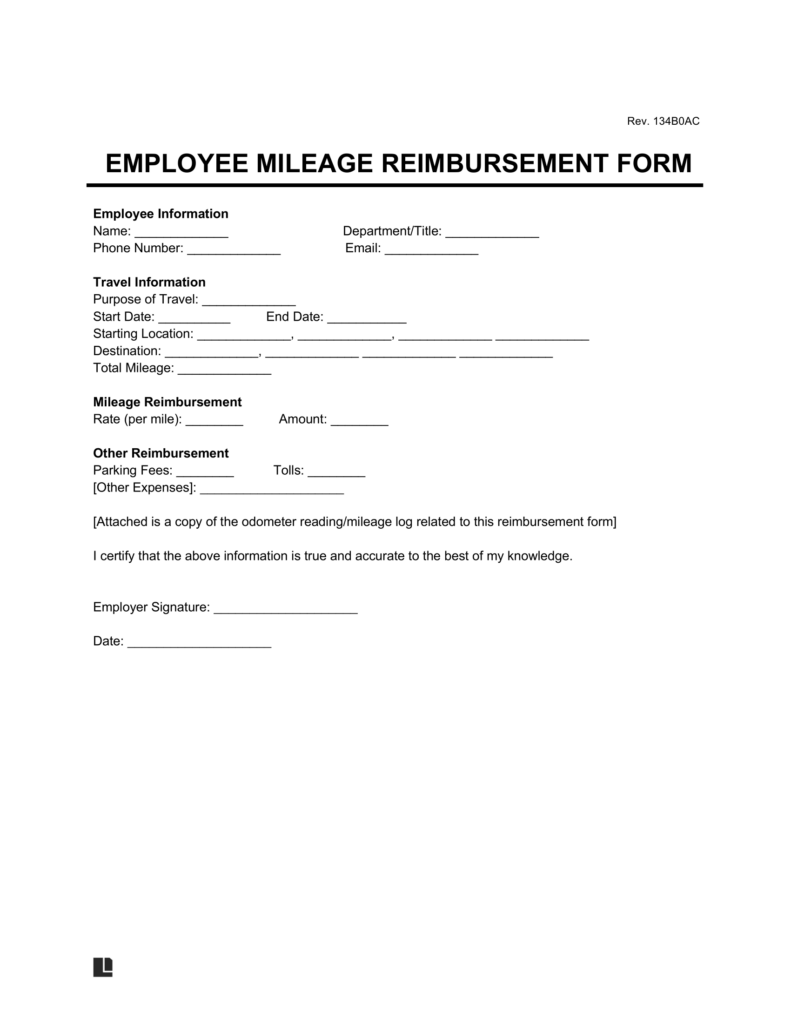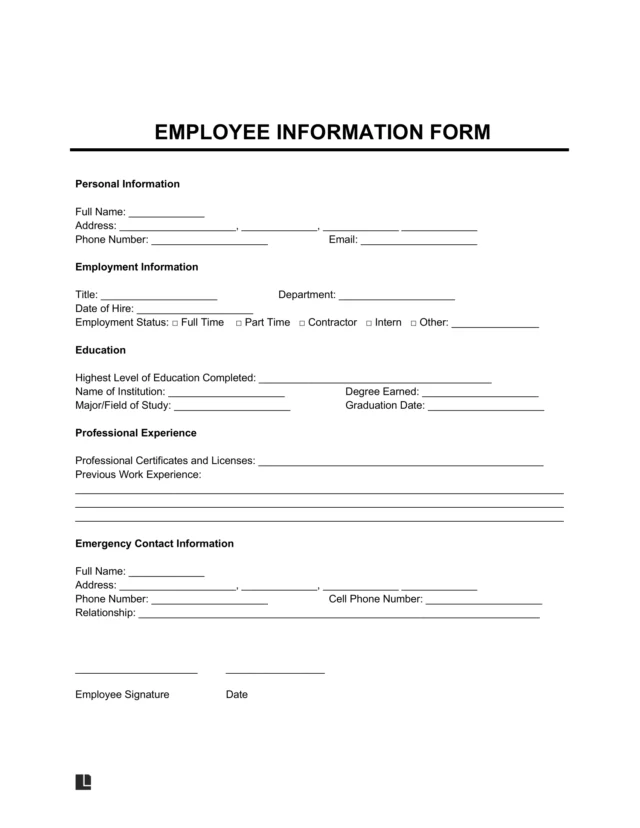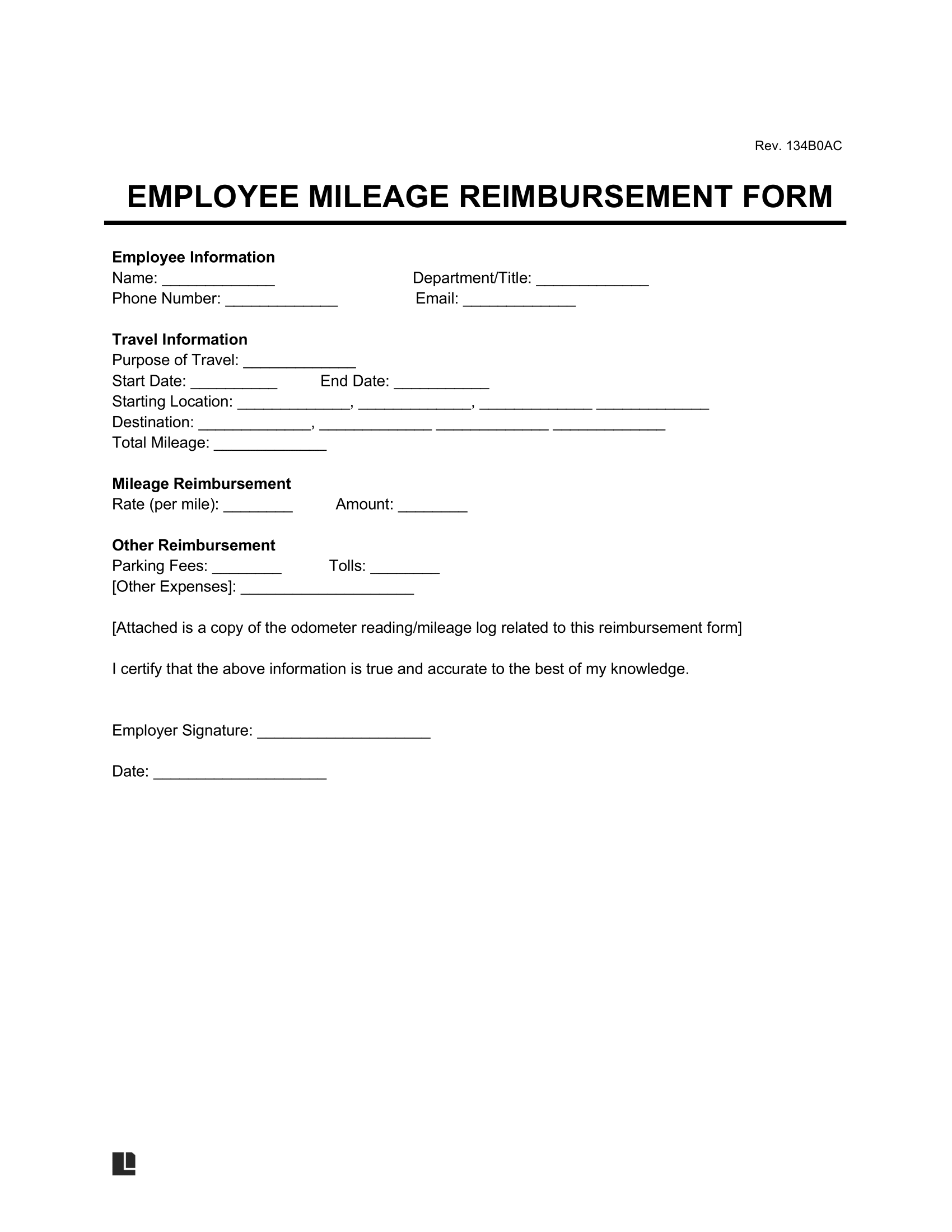An employee reimbursement form is a valuable tool for tracking work-related expenses. Employees can use the form to keep track of their costs on a weekly, monthly, or annual basis. Employers benefit from having a standard format that lists expense details.
How to Reimburse Employees for Expenses
Depending on the type of business, an employee may seek reimbursement for various expenses, including meals, mileage, travel, and supplies. Successful expense reimbursement requires the employer and employee to understand their roles.
For Employers
Company documents such as an employment contract, consulting agreement, or work-from-home policy may outline your expense reimbursement policy. Reimburse your workers for employment-related expenses by taking the following steps:
- Provide a standard employee reimbursement form template.
- Create an expense policy that includes reimbursable expenses and payment terms.
- Delineate the time frame for expense form submissions.
- Review submitted expenses and receipts, if applicable.
- Include reimbursements in the employee’s paycheck, direct deposit, or separate payment, as outlined in your expense policy.
Keep copies of the completed reimbursement form and documentation for your company’s records in case a labor dispute arises.
For Employees
While your employer may have a contractual obligation to reimburse certain expenses related to your job, you, as the employee, must still provide proof of those expenses. Follow these steps to avoid confusion and receive the correct reimbursement:
- If your employer does not offer a specific form, use a well-organized employee reimbursement form
- Review your company’s reimbursement policies to understand which expenses are reimbursable
- Be conscious of spending limits imposed by your company’s reimbursement policy
- Retain copies of receipts, credit card bills, or invoices for your expenses
- Submit your expenses within the required time frame to ensure timely payment
- Review your expense documents to ensure their accuracy
- Submit your employee reimbursement form to your manager or supervisor for approval
Depending on your company’s processes, you may need to submit the approved employee reimbursement form to your payroll department. In some cases, your supervisor will do this for you.
What to Include
An employee reimbursement form should include the following:
- The employee’s full name, job title, department, email address, and phone number
- The name of the employee’s supervisor
- Reimbursement details for each expense, including the amount, category, date, and reason for the expense
- Copies of any receipts or supporting documentation for expenses claimed
- A declaration that the form is correct
- Employee signature and date
- Supervisor approval, with their printed name, signature, and date
- Finance or payroll department approval, including the approved reimbursement amount, date reimbursed, and signature from the employee handling the payout
These details may differ depending on your company policy and procedures, so review your reimbursement policy with your supervisor or finance department before you submit your expenses. Incorrect submissions may prevent you from receiving reimbursement or lead to disciplinary action.
How to Write
Avoid unnecessary delays and complications by filling out your employee reimbursement form as follows:
Step 1 – Enter Employee Information
Your company may handle reimbursement forms from multiple employees. Keep your reimbursement on track by providing your printed name, job title, department, work email, and phone number. You should also clearly print your supervisor’s name with your information for easy reference.
Step 2 – Enter Reimbursement Details
List the details of your reimbursable expenses. Include whether they are for accommodations, travel, meals, supplies, or other reimbursable costs. Provide a clear description and explanation of the reason for each expense. Indicate the amount for each reimbursement request and the date you incurred the expense.
Step 3 – Attach Receipts and Documentation
Receipts, bills, invoices, and credit card bills provide evidence of the amount and date of your expenditure. If you do not provide documented proof, your company may delay or deny payment.
Step 4 – Declare the Form’s Accuracy
Sign and date the declaration to indicate that the information you provided in your form is true and accurate to the best of your knowledge. This demonstrates that you incurred the listed expenses while performing your job duties. The declaration is also your acknowledgment that false or misleading expense reimbursement requests could result in disciplinary action.
Step 5 – Secure Supervisor Approval
Once you complete, sign, and date your employee reimbursement form, submit it to your supervisor for approval. They will review your form before signing, dating, and forwarding it to your finance or payroll department.
Step 6 – Submit to the Finance Department
The finance department will review your expense documentation for accuracy. After this final check, the finance department will submit your employee expense reimbursement for payment. You may receive payment separately or in your regular paycheck.
Sample
You can simplify employee expenses by using this employee reimbursement form sample:

Frequently Asked Questions
What expenses can be reimbursed?
Here are everyday expenses that companies could reimburse:
- Travel expenses: Airfare, transportation, accommodation, parking fees, tolls.
- Meals and entertainment: Business meals, client entertainment.
- Office supplies: Stationery, printer ink, small equipment.
- Professional development: Conference fees, training sessions.
- Communication expenses: Mobile phone bills, internet charges.
- Client-related expenses: Hosting clients, gifts, and business-related events.
- Miscellaneous expenses: Shipping costs, professional membership fees, subscriptions.
Please note that specific reimbursement policies and guidelines may vary by company. Always refer to your company’s reimbursement policy for detailed information.
What supporting documents should I attach to the reimbursement form?
Typically, you will need to provide original or electronic copies of receipts, invoices, or any other relevant documents that support your expense claim. These documents serve as proof of payment and should include details such as the vendor’s name, date, the amount paid, and a description of the expense.
Are there any limitations on the reimbursement amount?
Some companies may have limitations or guidelines on the maximum reimbursement amount for specific expense categories. Review your company’s reimbursement policy or guidelines to ensure compliance with any limits or restrictions.





